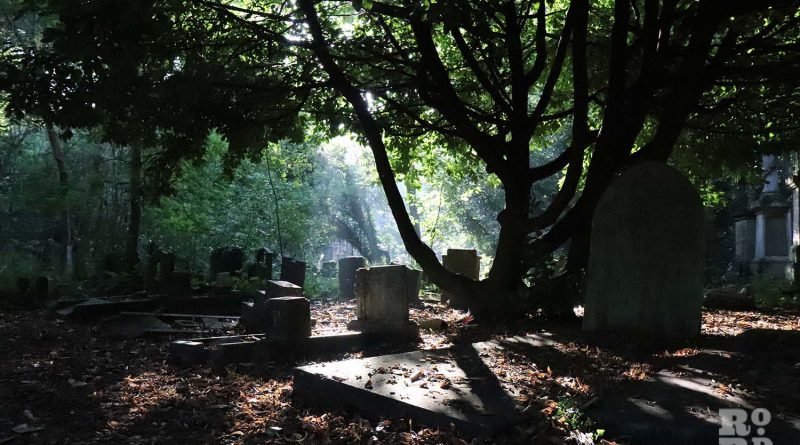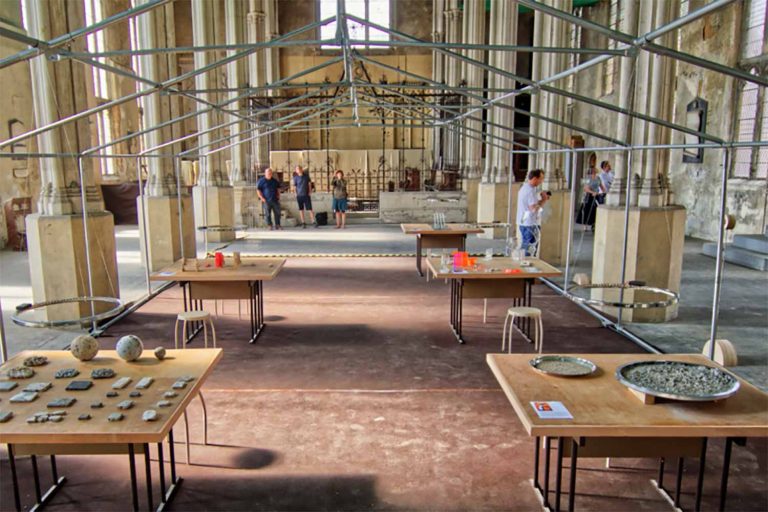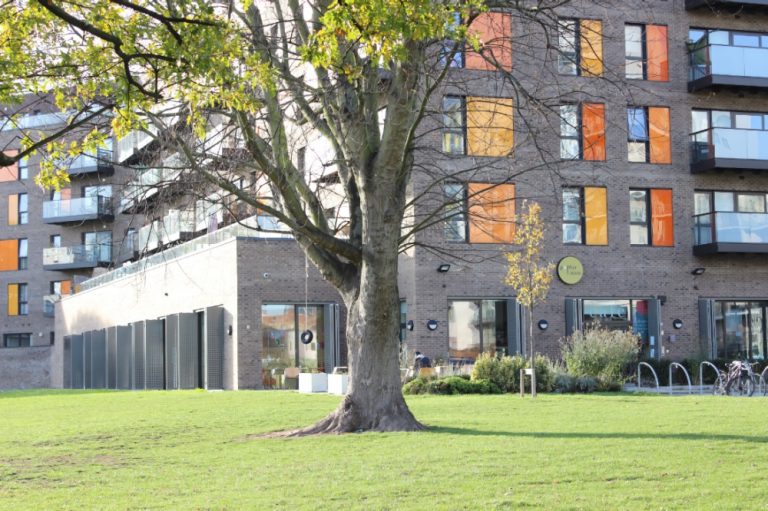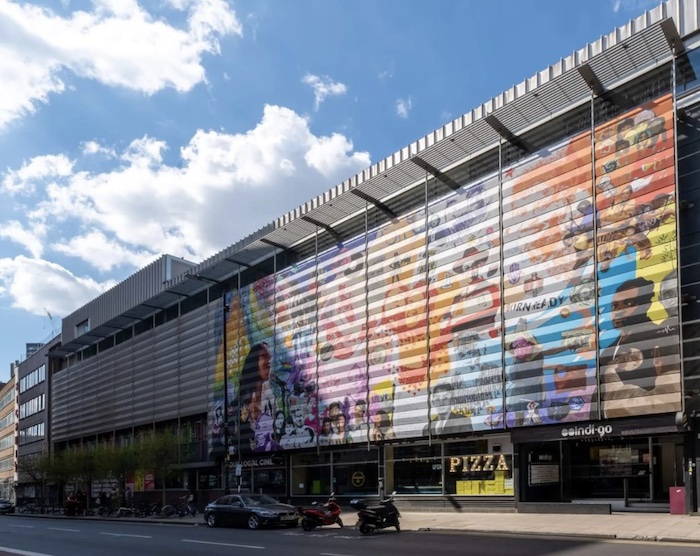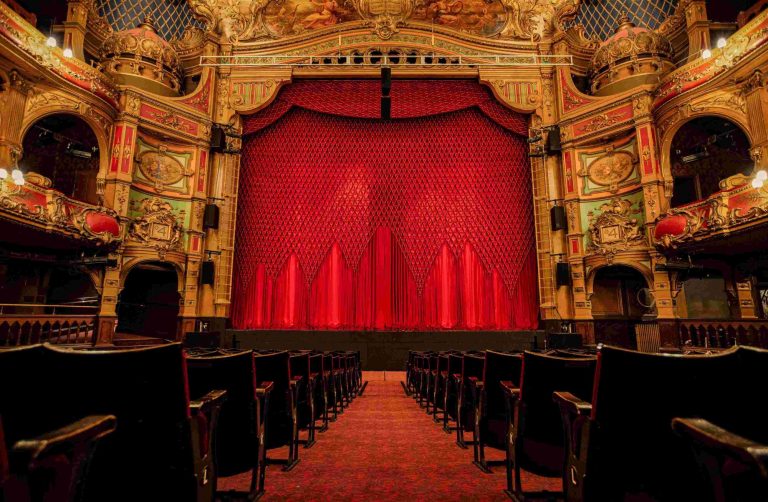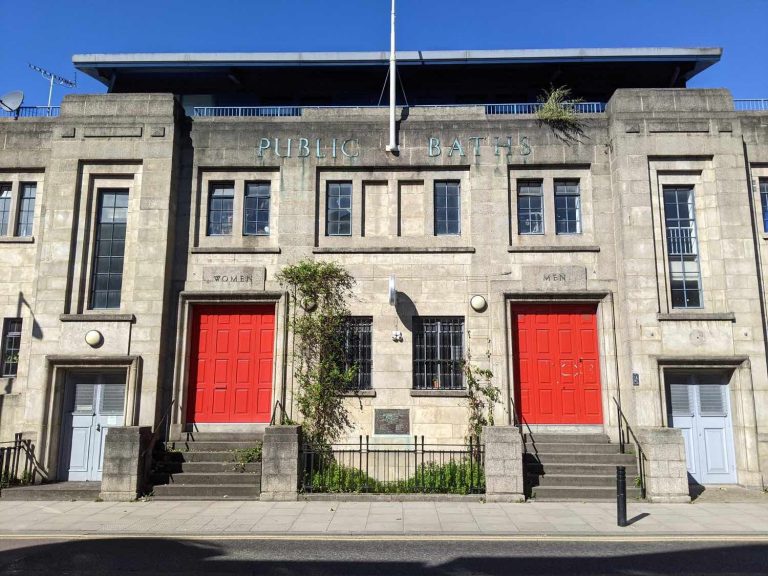The graves and memorials in Tower Hamlets Cemetery Park
We take a spooky tour of Tower Hamlets Cemetery Park and discover that it holds fascinating clues to the East End’s dead.
As October is the appointed month of ghouls, ghosts and all things that go bump in the night, we decided to take ourselves on The Friends of Tower Hamlets Cemetery Park’s self-guided Heritage Trail to dig up some of the cemetery’s most notable graves.
At an impressive ten hectares, about the same size as 14 football pitches, the wonderful wilderness of Tower Hamlets Cemetery Park is just about contained by the signs of the living: commuters’ railway tracks, fertile allotments, high-rise tower blocks, and Victorian schools.
But despite the abundance of wildlife, birdsong, and blossoming plants, it is also a conspicuous reminder of death.
With the morning dew rising to become a light veil of mist hanging in the air as the morning sun rose, we set out on the trail of the most intriguing and notable East End people no longer of this world but whose stories and legacies continue from beyond the grave.
Passing the Soanes Centre and making our way further into the cemetery, the first post we visited was the Westwood Memorial. It is one of the largest memorials in the cemetery and was built for the owner of the biggest house on Bow Road at the time, Tredegar House.
In true high-Victorian gothic style, the Memorial is a heavy stonework structure, reminiscent, albeit a far smaller and less extravagant version, of the Albert Memorial in Kensington Gardens. Such styles were mimicked by the wealthy merchant classes to display power, wealth and prestige.
The Westwood Memorial is dedicated to Joseph Westwood, a 19th-century businessman who lived in Tredegar House on Bow Road. He was an iron shipbuilder and owner of London Yard Iron Works in Poplar.
Next to the Westwood Memorial, in incongruous and stark fashion, is a far more understated yet beautifully carved chalky white stone pair of hands, gently cradling a sparrow, ready to take flight. This memorial honours Dr Barnardo’s children, of which some 500 or so were buried here between 1876 and 1924. While Dr Barnardo and his children’s homes took care of abandoned or poverty-stricken children, they could not be shielded from diseases rampant in Victorian and Edwardian London, such as cholera or tuberculosis. Those who died in Dr Barnardo’s care were buried in unmarked graves and it is only right that the children, victims of their era, are given the recognition they deserve today.
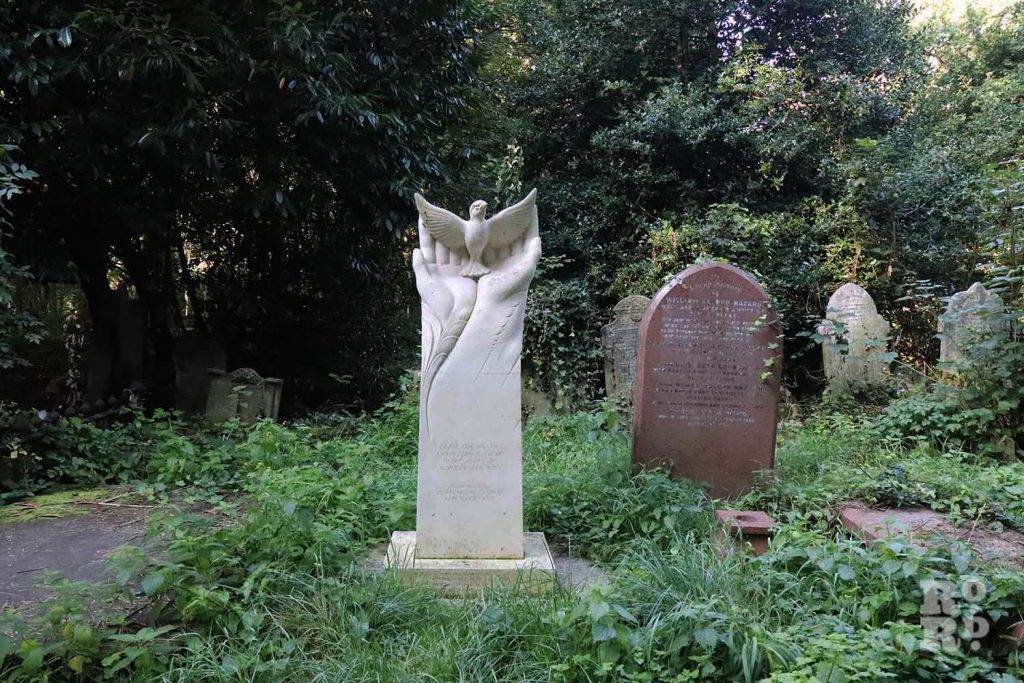
Walking a further 200 metres east, we come across the Bear family’s grave. Nine Bears were buried here over the span of fifty years. There is something slightly creepy knowing where your final resting place would be…
Originally German Jews (it is believed that their original name was Behr), the Bears converted to Methodism and anglicised their name. They were 19th-century tobacco merchants, holding premises on White Church Lane and Commercial Road in Aldgate East.
The grave has an unusual wheatsheaf marking at its base. At first glance, it may seem unusual to want wheat as your graveyard motif but, in Christianity, wheat represents the body of Christ, and is a symbolism of immortality and resurrection. A sure-fire way to ward off the Devil and any other evil spirits that may be lurking in the dark.
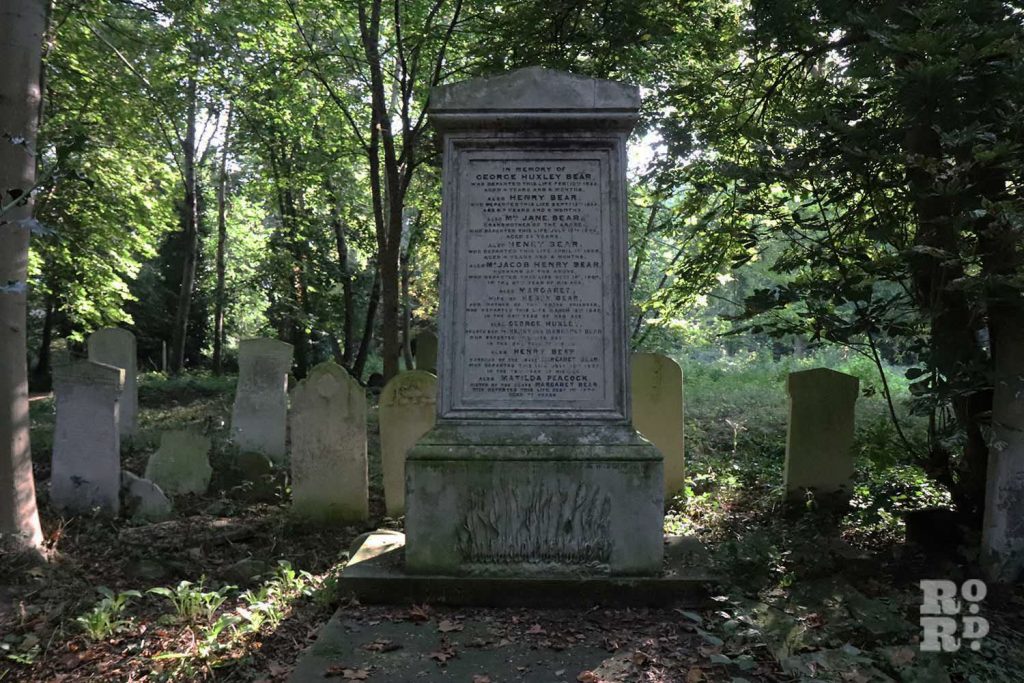
We continued on the Trail by making our way around the almost circular loop, and turned down south, walking for 100 metres or so.
At this point, we came to the curved Blitz Memorial, made out of a patch work of red and brown bricks taken from bombed properties. It marks the 190 people who died in air raids. Still in living memory for some, it remains a poignant reminder that the East End bore the heaviest brunt and burden of the Luftwaffe’s bombing.
A little further down, there is another reminder of war: there are the graves of the 173 people, including 62 children, who lost their lives at Bethnal Green Tube disaster in March 1943. It was the largest single loss of civilian life during World War II but it went largely unreported.
News of the disaster was withheld for 36 hours, and only after then, were short reports allowed. Fuller details were eventually released almost 24 months later, at the start of 1945. The government claimed it sought to suppress the news for fear that it would result in further air raids from the Germans.
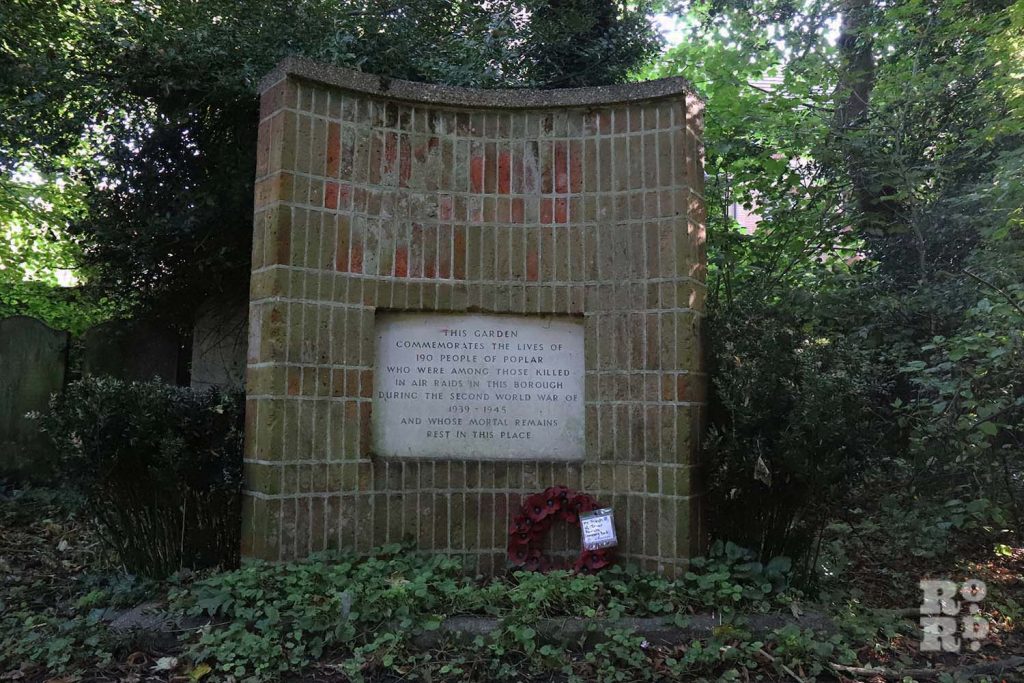
Given the East End’s strong links and association with the Thames, we were determined to find the Emblem of Watermen and Lightermen. After scouring the area through blackish-green almost impenetrable foliage, we found the Emblem on a rusty-brown marble headstone. It was set back from the path, semi-hidden behind two other graves, and its base was entangled in Rapunzel-like ivy.
With their knowledge and skills of ships and heavy cargo, watermen and lightermen played an essential role in ensuring London’s status as the centre of global trade during the 18th and 19th centuries.
However, the building of bridges along the Thames, the introduction of huge container ships, and machinery to offload cargo onto the shores, the need for waterman and lightermen’s services declined in the 20th century. By the mid-1970s the profession had all but disappeared.
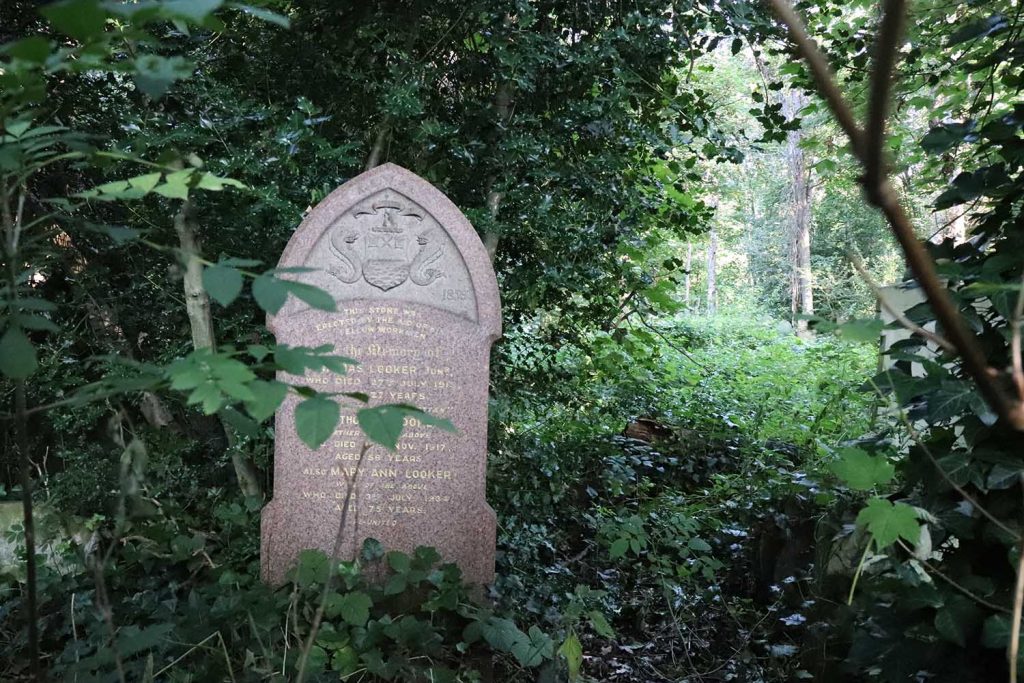
While much of the Trail felt serenely mystical, this part of the path was the eeriest: the thick dense trees secluded much light, with only small spotlights of sun illuminating pockets of the path.
Row upon row of austere weighty headstones, arranged like crooked teeth, remained the only markers of the thousands of people who were laid to rest; their names, once deeply carved inscriptions, now barely visible, having been weathered by almost two centuries worth of rain, wind, sun and snow.
As we continued on the path, we looped around and arrived at a stoned-carved (and handless) angel-like statue; this is the monument to Charles Brown. An early 20th-century pub owner of the Railway Tavern, at Limehouse, Brown was a local celebrity, known for his boxing, flamboyant character, and collection of curios from every corner of the globe. His pub was casually and more affectionately known as Charlie Brown’s.
As Brown’s fame spread, people from all over London visited his pub. His death in 1932 was met with an outpouring of grief; his funeral procession was one of the biggest the East End had ever seen with 16,000 people gathered at the Cemetery. This was only surpassed by the funeral of Ronnie Kray over 60 years later, in 1995.
Before we left the cemetery, we passed Tower Hamlet Cemetery’s War Memorial. Set in a semi-circle, the large memorial takes up the most amount of space of any of the graves or memorials we saw. Set over sixteen bronze plaques, it commemorates the almost 300 East Enders who died in both World Wars. Lest we forget the lives sacrificed and the lives lost.
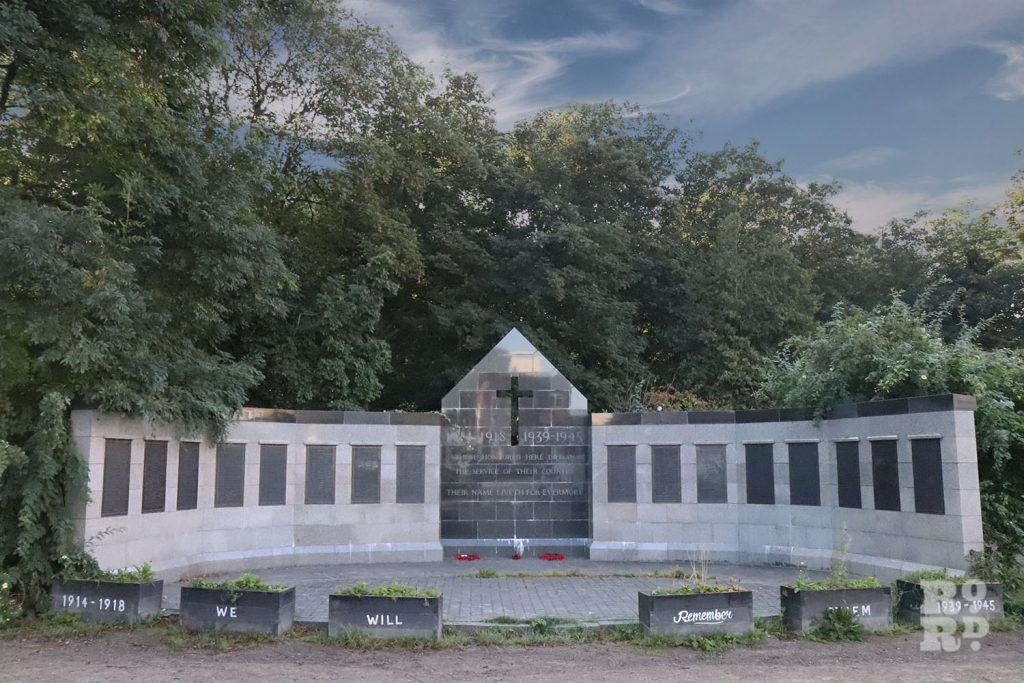
There is little signage in the Cemetry, which means you may find yourself taking a few wrong turns and even getting lost, but this only enhances the other-worldliness of this uniquely spooky, yet charming, space in London.
If you want to take yourself on the Tower Hamlets Cemetery Park’s Heritage Trail, click here to find out more.
If you enjoyed this, then have a read of Tower Hamlets Cemetery Park’s history.

